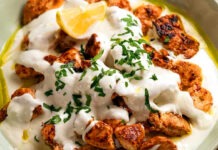BAKU MARCH 19: Chef Tawakkul is the head of Wilderness Cooking. a 51-year-old from Gamarvan, who lives among magnificent mountains in Azerbaijan. Here, traditions thrive, and nature inspires every part of life. Wilderness Cooking is all about cooking in the wild. I cook a variety of delicious dishes in unusual and picturesque places of my homeland.
There is something refreshing about seeing a male chef in the media who doesn’t wear makeup. A completely ordinary man, behaving normally (not naked, not angry, not a kitchen hell – just normal). Probably, this is exactly what lies behind Chef Tawakkul’s great success.
Camels have long been domesticated and, as livestock, they provide food (camel milk and meat) and textiles (fiber and felt from camel hair). In Kazakh cuisine, camel meat is for festive occasions. camels originated in North America and eventually spread across Beringia to Asia. They survived in the Old World, and eventually humans domesticated them and spread them globally.
Camel meat and milk are foods that are found in many cuisines, typically in Middle Eastern, North African and some Australian cuisines. Camels provide food in the form of meat and milk. Camel milk is a staple food of desert nomad tribes and is sometimes considered a meal itself; a nomad can live on only camel milk for almost a month.
Approximately 3.3 million camels and camelids are slaughtered each year for meat worldwide. A camel carcass can provide a substantial amount of meat. The brisket, ribs and loin are among the preferred parts, and the hump is considered a delicacy.
Camel is one of the animals that can be ritually slaughtered and divided into three portions (one for the home, one for extended family/social networks, and one for those who cannot afford to slaughter an animal themselves) for the qurban of Eid al-Adha.
Camel meat has been eaten for centuries. It has been recorded by ancient Greek writers as an available dish at banquets in ancient Persia, usually roasted whole.








